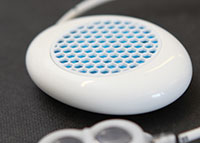Background
 Diabetes is a common condition for which treatments are available but not always optimal. The therapeutic aim, using insulin, tablets, diet and physical activity, is to keep blood glucose down from their high levels to within the normal limits. This is because the high glucose levels associated with diabetes may eventually lead to ill health with outcomes such as heart disease, stroke, pain and poor blood supply to lower limbs, kidney disease and blindness, although these problems may take some years to emerge. These are the well-known complications of both the common forms of diabetes (types 1 and 2) and can develop even when a person with diabetes does their best to comply with their recommended treatment.
Diabetes is a common condition for which treatments are available but not always optimal. The therapeutic aim, using insulin, tablets, diet and physical activity, is to keep blood glucose down from their high levels to within the normal limits. This is because the high glucose levels associated with diabetes may eventually lead to ill health with outcomes such as heart disease, stroke, pain and poor blood supply to lower limbs, kidney disease and blindness, although these problems may take some years to emerge. These are the well-known complications of both the common forms of diabetes (types 1 and 2) and can develop even when a person with diabetes does their best to comply with their recommended treatment.
The problem that some diabetic people face is that it can be very hard to control blood glucose levels perfectly with their medication. This is just as true for those who vary their dose according to their measured glucose readings (for example those people on DAFNE or DESMOND programmes) as it is for people on a treatment programme where they take a prescribed constant dose daily.
The fact is that the chances are high for finding glucose levels in the blood that are greater than they should be. This is partly because the levels change constantly depending on the timing and content of meals but also on how much energy is expended, among other factors, all of which are liable to differ day to day. In people without diabetes, the pancreas releases insulin on a continually accommodating basis and this adjusts blood glucose levels to near-normal all the time.
Glucose-controlling medication is usually taken twice to three times daily and such a regimen cannot be expected to achieve the fine adjustments necessary for perfect glucose control. Understandably, most people with diabetes tend to err on the side of under-dose.
This gives no immediate symptoms, whereas medication overdose (in an effort to stop glucose peaks) can produce what is known as a “hypo”. A hypo is unpleasant and potentially unsafe, making the person perspire and possibly feel faint. While avoiding this acute symptom is obviously wise, overcompensating for hypos is not.
The slowness of the onset of the long-term complications of masks the risks of chronically under-treated diabetes. The consequence is that many people with diabetes eventually develop health problems. This is serious to the individual but also costs the NHS £1 million pounds per hour to treat.